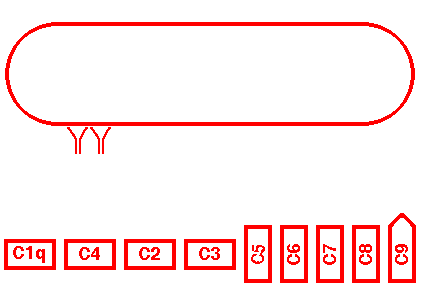
|
The classic pathway of complement activation is illustrated above. Antibody coating a microbe will display Fc receptors that, if close enough, can cross-link C1 (of which C1q is a main component) to begin complement activation. The enzymatic action of the bound C1q cleaves C4 and then C2, leaving a C4bC2a complex that acts as a "C3 convertase" to cleave bound C3. The resultant C4bC2aC3b complex acts as a "C5 convertase". C5 is cleaved, yielding a C5a component that is a powerful chemoattractant. C5b binds C6, C7, C8, and C9 to form a "membrane attack complex" that punches a hole through the membrane in the microbe. |